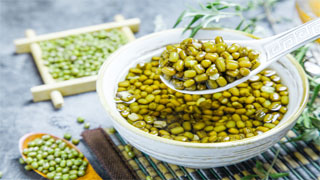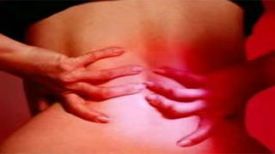
With the changes in modern lifestyle and dietary habits, hyperlipidemia has become one of the common diseases affecting people's health. Abnormal symptoms in the legs are often one of the early warning signals of high blood lipids.
These 5 signs on the legs may indicate elevated blood lipids
1. Leg pain and edema
Patients with hyperlipidemia may experience leg pain and swelling after walking for a period of time. This is due to high blood lipids leading to arteriosclerosis, causing the inner walls of blood vessels to become uneven and hindering blood circulation.
When there is insufficient blood supply to the legs, hypoxia and malnutrition can cause pain and edema. However, after resting for a period of time, the symptoms will alleviate as blood circulation is restored, blood supply is replenished in a timely manner, and leg tissues receive sufficient oxygen and nutrients.
2. Leg cramps
High blood lipids lead to excessive accumulation of cholesterol in the body, accelerating the contraction of calf muscles, causing spasms and pain.
3. Pale skin on the legs
High blood lipids may affect blood circulation, leading to insufficient local blood supply and causing the skin or mucous membranes of the legs to appear relatively pale in color.
4. Thickening of nails
High blood lipids may affect blood flow, thereby affecting the blood supply to the nail bed, resulting in slower nail growth and thicker toenails.
5. Numbness and weakness in the legs
High blood lipids increase blood viscosity, making it easy to form plaques or blood clots, further hindering blood flow and causing insufficient blood supply to the leg vessels, leading to numbness and weakness in the legs.
These symptoms are all related to blood circulation disorders caused by high blood lipids. If there is persistent discomfort in the legs, it is necessary to seek medical attention promptly for comprehensive examination and treatment.
What are the methods for dietary regulation of high blood lipids?
Adjusting one's diet is a very effective way to regulate one's high blood lipids. Here are a few dietary recommendations that can help lower blood lipids:
1. Reduce the intake of saturated fat and trans fat
Saturated fat and trans fat can increase the level of "bad" cholesterol (low-density lipoprotein cholesterol). It is advisable to avoid consuming high-fat processed foods, fried foods, and vegetable oils containing trans fats as much as possible.
2. Moderate intake of protein
Protein is an essential nutrient for the body, but excessive intake may increase the pressure on the liver to produce cholesterol. Low fat protein sources should be chosen, such as lean meat, skinless poultry, fish, and soy products.
3. Control carbohydrate intake
Excessive intake of refined carbohydrates (such as white bread and desserts) can lead to elevated blood sugar and insulin levels, thereby affecting blood lipid levels. You should choose more whole grains, vegetables, and fruits.
4. Increase dietary fiber intake
Dietary fiber helps to lower levels of "bad" cholesterol. We should eat more fiber rich foods, such as whole grains, beans, vegetables, and fruits.
5. Control sodium intake
A high sodium diet can cause an increase in blood pressure, which in turn affects blood lipid levels. The intake of salty foods, processed foods, and sodium containing seasonings should be reduced.
6. Limit alcohol and sugar intake
Alcohol and sugar can have adverse effects on blood lipid levels, and should be consumed in moderation or avoided as much as possible.
7. Maintain sufficient water intake
Adequate hydration helps dilute blood and improve blood circulation. Adjusting dietary habits can effectively help improve hyperlipidemia. But if the symptoms persist, timely medical attention and further examination are still necessary.
Traditional Chinese Medicine Dietary Therapy and Nourishing Method
1. Yinchen Hawthorn Malt Drink
Formula: 20 grams of Artemisia scoparia, 15 grams of raw hawthorn, and 15 grams of raw malt.
Method: Put the above medicinal herbs into a clay pot, add an appropriate amount of water and boil for 20 minutes, then filter out the medicinal juice. Boil with water again for 20 minutes, remove the residue and take out the medicine juice. Mix the two decoctions evenly.
Usage and Dosage: Take 100ml twice a day for half a month.
Effect: This drink has the effects of clearing the liver and promoting bile flow, clearing heat and dampness, and strengthening the spleen and reducing fat. Mainly used for treating early hyperlipidemia patients.
2. Shugan Jianpi Weight Loss Tea
Recipe: 15 grams each of rose, jasmine, hawksflower, and lotus leaf, and 10 grams of orange peel.
Method: Grind the above materials into fine powder and brew with boiling water to replace tea for consumption.
Effect: This tea has the effects of soothing the liver, strengthening the spleen and regulating qi, and promoting dampness and reducing fat. Persist in drinking for better results.
3. Steamed lotus root, mung bean, radish
Ingredients: 2 sections of lotus root, 100g of mung beans, and 60g of carrots.
Method: Wash the mung beans, soak them for half a day, drain the water, wash the carrots, chop and mash them into a paste, then mix with an appropriate amount of white sugar and set aside. Wash the lotus root thoroughly, cut off the end near the lotus root node, and keep the cut part. Fill the lotus root hole with evenly mixed mung bean and radish puree, filling it tightly. Then cover the cut part, fix it with bamboo sticks or ropes, and steam it in a steamer until cooked.
Usage: It can be used as a Dim sum.
Effect: This dish has the effect of reducing blood lipids and softening blood vessels. Mainly used to treat hyperlipidemia caused by liver qi stagnation and heat dissipation.
Before using Tonic Diet, it is recommended to consult with a doctor or professional Chinese medicine doctor, and use it according to personal circumstances.


